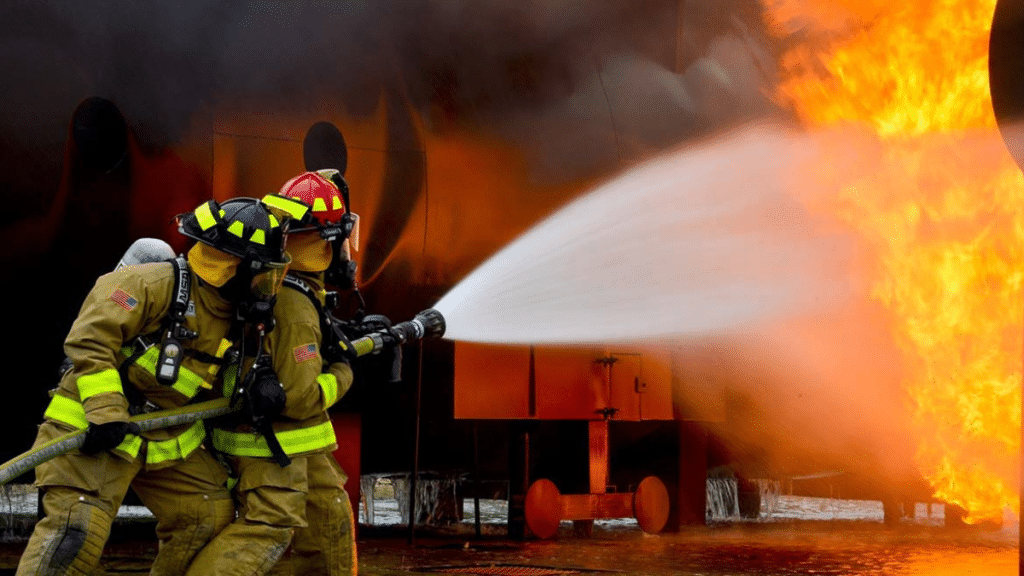In research and clinical laboratories, safety protocols must account for both chemical hazards and physical risks. Two specialised training programmes; confined space rescue training and fire watcher training, provide critical skills for staff who work in enclosed spaces or with hot equipment. By integrating these courses into lab safety plans, managers can ensure rapid, effective response to emergencies and foster a culture where prevention and preparedness go hand in hand.
Understanding confined space risks in the lab
Many laboratories include equipment installations or storage areas that qualify as confined spaces, chemical fume hoods, large autoclaves, vertical storage cabinets and process chambers. These environments can pose unseen dangers: oxygen depletion, toxic vapours or mechanical entrapment. Researchers entering these areas without proper training risk serious injury or worse.
Confined space rescue training equips designated personnel to assess atmosphere quality, select appropriate respiratory protection and execute safe entry and exit procedures. Trainees learn to use portable gas monitors, set up retrieval systems and coordinate with emergency responders. Practical drills simulate scenarios such as a colleague incapacitated by a chemical leak or trapped by malfunctioning equipment. This hands-on practice builds muscle memory and calm decision making so that, when time is critical, the rescue proceeds without hesitation.
Preventing hot-work incidents with fire watcher training
Laboratories frequently perform tasks that generate heat or sparks, soldering in the electronics lab or metalwork stations in materials science. Even brief exposure to hot tools can ignite flammable liquids or residues on benchtops.
Fire watcher training teaches staff to monitor hot-work zones actively. Fire watchers learn to establish safety perimeters, position extinguishers for rapid access and conduct site inspections before and after the task. During live operations, they remain vigilant for stray sparks or smouldering debris. Training exercises include simulated ignitions in a controlled setting, allowing watchers to practise evacuation alerts and coordinated suppression tactics. Incorporating fire watchers into lab protocols reduces the likelihood of small incidents escalating into major fires.
Embedding training into laboratory safety programmes
Simply offering these courses is not enough. Laboratories must track who has completed each programme and when refresher sessions are due. Platforms such as FMTC’s portal provide a central dashboard where safety officers can upload training records, schedule renewals and generate compliance reports. Automated reminders ensure no one works with stale certification, and audit-ready documentation supports internal reviews and regulatory inspections.
By integrating training management into standard operating procedures, laboratories reinforce that safety remains a continuous priority. Supervisors receive alerts when staff certifications near expiration. New team members are enrolled automatically as part of their onboarding. This systematic approach aligns with research quality standards by minimising unplanned downtime and preventing data loss due to accidents.
Benefits for health and research outcomes
Adopting a structured approach to rescue and fire watcher training yields clear advantages. Incident rates drop as staff anticipate and eliminate hazards before they occur. When emergencies do arise, trained responders reduce injury severity and limit disruption to experiments and patient services. A safer laboratory environment supports staff well-being, improves morale and enhances the institution’s reputation for rigorous, responsible research.
Conclusion
Confined space rescue training and fire watcher training checkboxes on a safety audit. They are vital to a comprehensive laboratory safety programme that protects both personnel and research integrity. By combining specialist instruction with a robust tracking system, laboratories create an environment where every team member knows how to prevent hazards and respond decisively when it matters most. An investment in these courses is a commitment to health, science and safety.
